Night markets transform ordinary streets into culinary wonderlands after dark, where the aroma of sizzling street food mingles with the energy of bustling crowds and twinkling lights. These vibrant food destinations offer authentic local flavors, creative fusion dishes, and immersive dining experiences that capture the true spirit of their cities.
Here is a list of 20 night markets every foodie should experience, each serving up unforgettable flavors and atmosphere.
Shilin Night Market
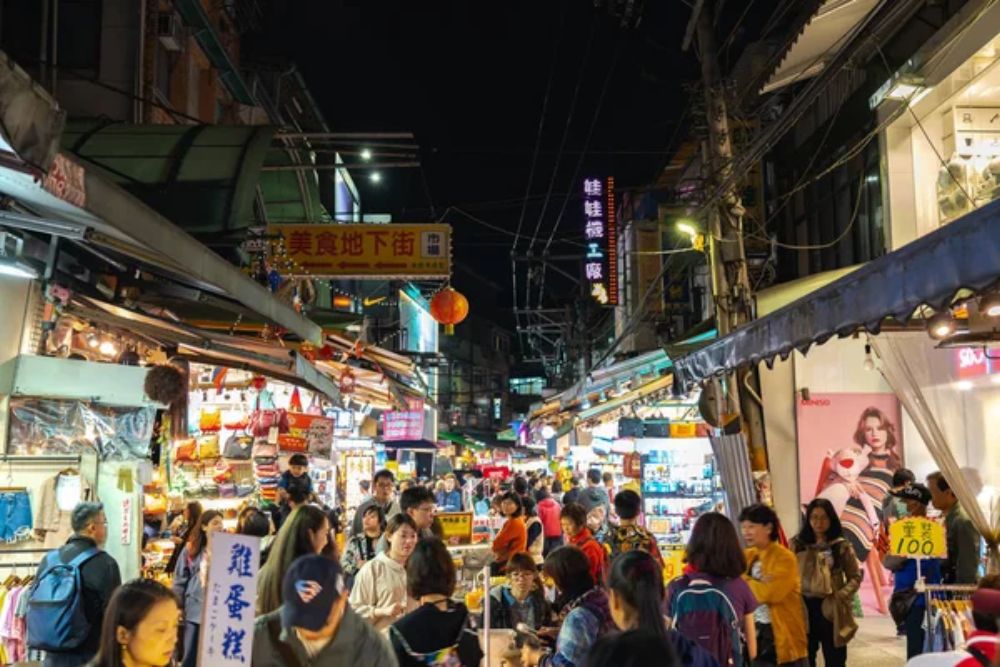
Taiwan’s largest and most famous night market draws millions of visitors annually to its maze of food stalls and vendors in Taipei. The market specializes in Taiwanese comfort food, such as stinky tofu, oyster omelets, and bubble tea, alongside creative fusion dishes that blend traditional flavors with modern techniques.
Vendors here perfected many dishes that have become global phenomena, including oversized fried chicken cutlets that require two hands to hold and various bubble tea innovations.
Chatuchak Weekend Market
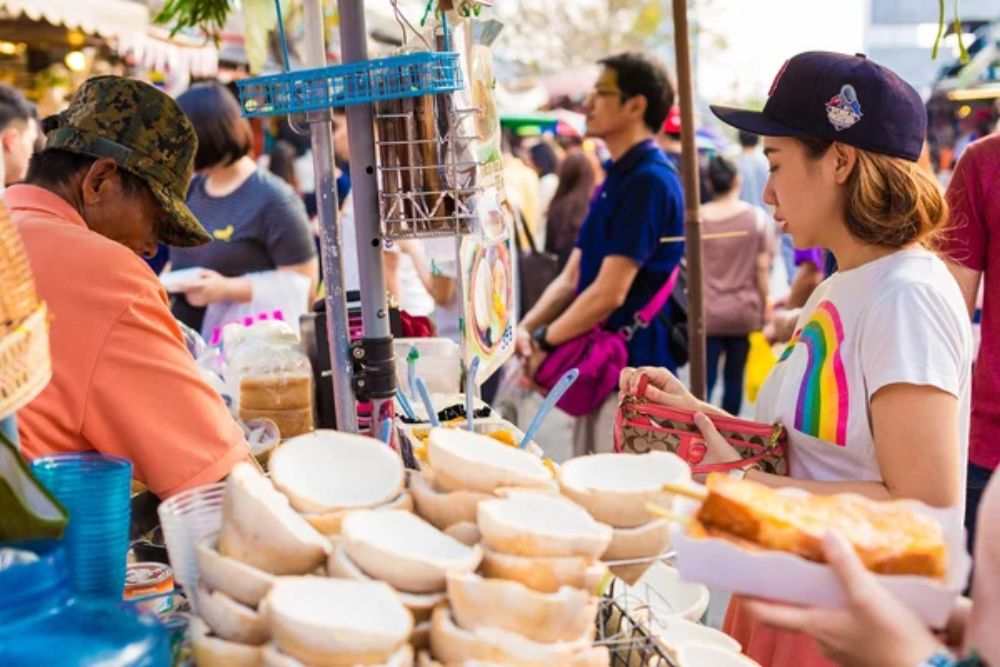
Bangkok’s sprawling Chatuchak market transforms into a food paradise on weekend evenings (Friday to Saturday), offering a diverse range of dishes, from traditional Thai street food to international fusion creations. The market’s food section features over 200 vendors serving pad Thai prepared tableside, fresh mango sticky rice, and creative takes on classic dishes, such as tom yum soup shooters.
Local chefs often test new concepts here before opening restaurants, making it a hotspot for discovering the next big food trend.
Like Travel Pug’s content? Follow us on MSN.
Wangfujing Snack Street
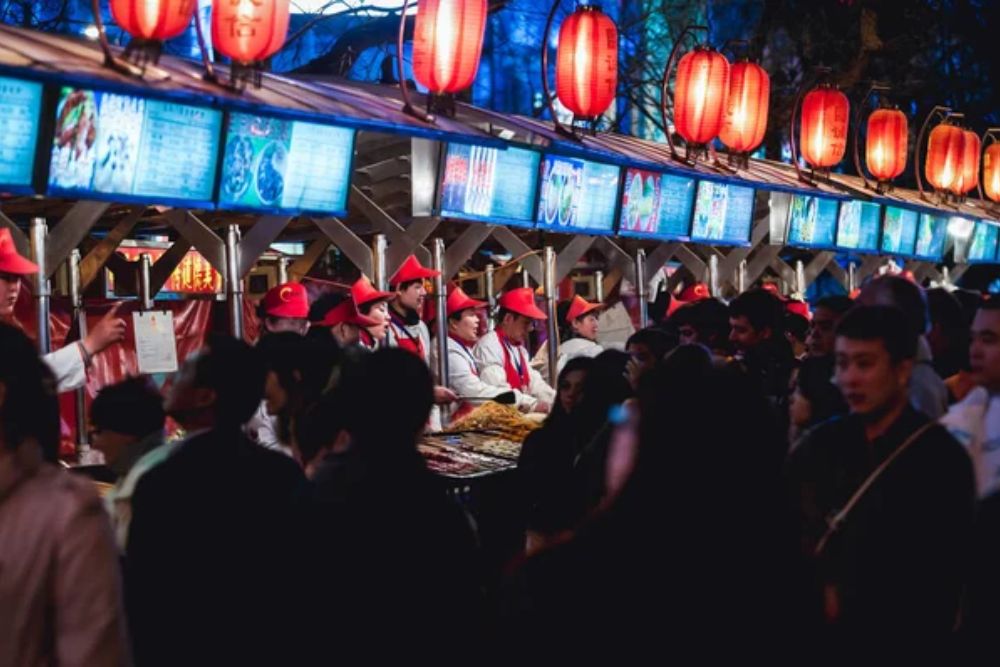
Located near one of Beijing’s busiest shopping districts, Wangfujing Snack Street is a vibrant alleyway packed with neon lights and sizzling street food stalls. The market is famous for its mix of classic Beijing snacks—such as jianbing (savory crêpes), baozi (steamed buns), and tanghulu (candied fruit)—alongside more daring delicacies like scorpions, silkworms, and starfish, often grilled on skewers.
Despite its popularity with tourists, many stalls here still serve authentic flavors that reflect northern China’s bold culinary traditions. It’s a must-visit for food lovers seeking both comfort and adventure in the heart of Beijing.
Jemaa el-Fnaa
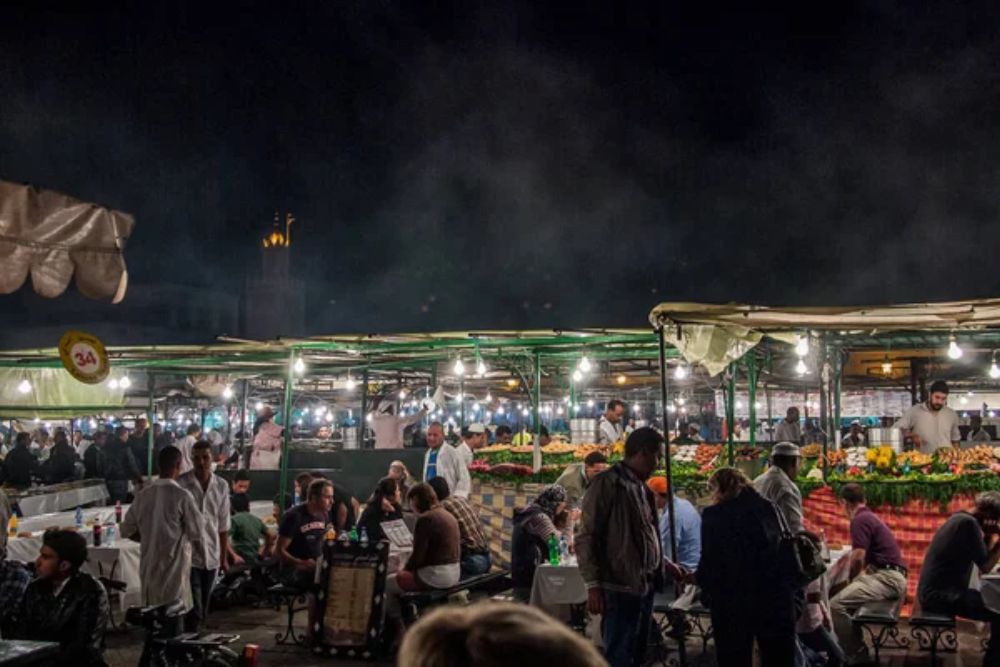
Marrakech’s UNESCO World Heritage square transforms each evening into Morocco’s most atmospheric dining destination, where traditional Berber culture meets culinary excellence. Food stalls emerge at sunset, serving tagines, couscous, grilled meats, and fresh orange juice, while storytellers, musicians, and performers create an unforgettable sensory experience.
The market represents centuries of North African trading culture, where spices, recipes, and cooking techniques from across the continent converge in one magical location.
Mercado de San Miguel
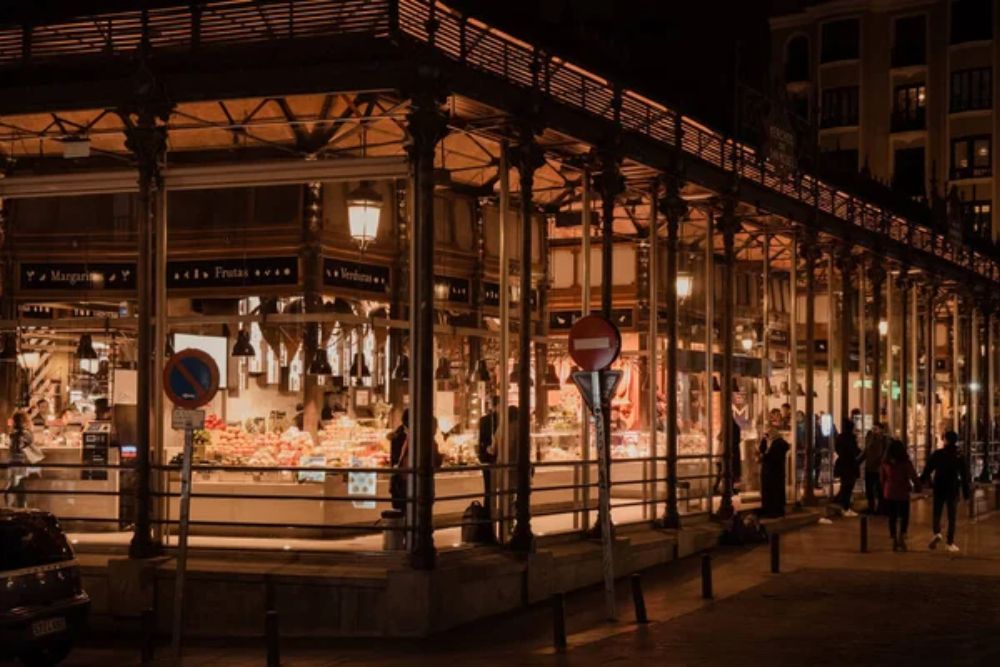
Madrid’s glass-and-iron market hall combines the atmosphere of a traditional market with upscale tapas culture, creating a sophisticated night food experience. The market features over 30 vendors offering Spanish specialties, including jamón ibérico, Manchego cheese, fresh oysters, and creative tapas, paired with Spanish wines and craft beers.
Unlike typical street markets, this venue provides a refined setting where visitors can experience Spain’s culinary heritage in an elegant historic building.
Like Travel Pug’s content? Follow us on MSN.
Night Bazaar Food Court
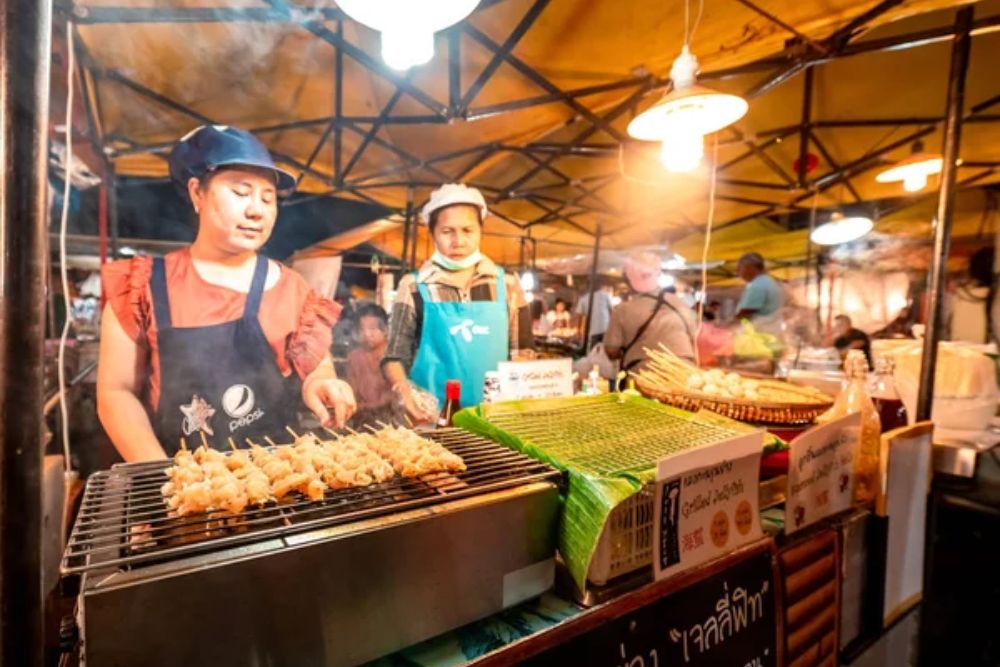
Chiang Mai’s bustling market offers northern Thai specialties in a vibrant setting that captures the essence of Thai food culture. The market specializes in regional dishes, such as khao soi (curry noodle soup), sai ua (northern Thai sausage), and som tam (papaya salad), prepared by vendors who have perfected their recipes over generations.
The relaxed atmosphere encourages lingering over multiple dishes, allowing you to experience the friendly hospitality that defines Thai dining culture.
Jalan Alor Food Street
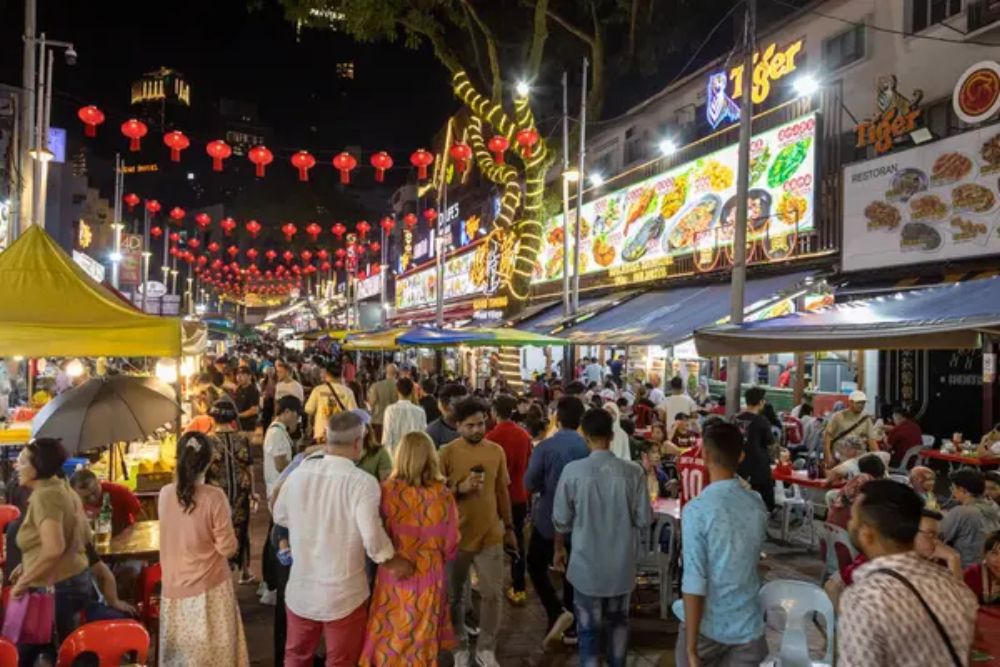
Kuala Lumpur’s night market showcases Malaysia’s incredible ethnic diversity through its diverse food offerings, representing the culinary traditions of Malays, Chinese, and Indians. Vendors serve authentic dishes like char kway teow, rendang, roti canai, and cendol, often fusion creations that reflect Malaysia’s multicultural heritage.
The market showcases how different ethnic communities have influenced each other’s cooking, creating uniquely Malaysian flavors that are found nowhere else in the world.
Temple Street Night Market
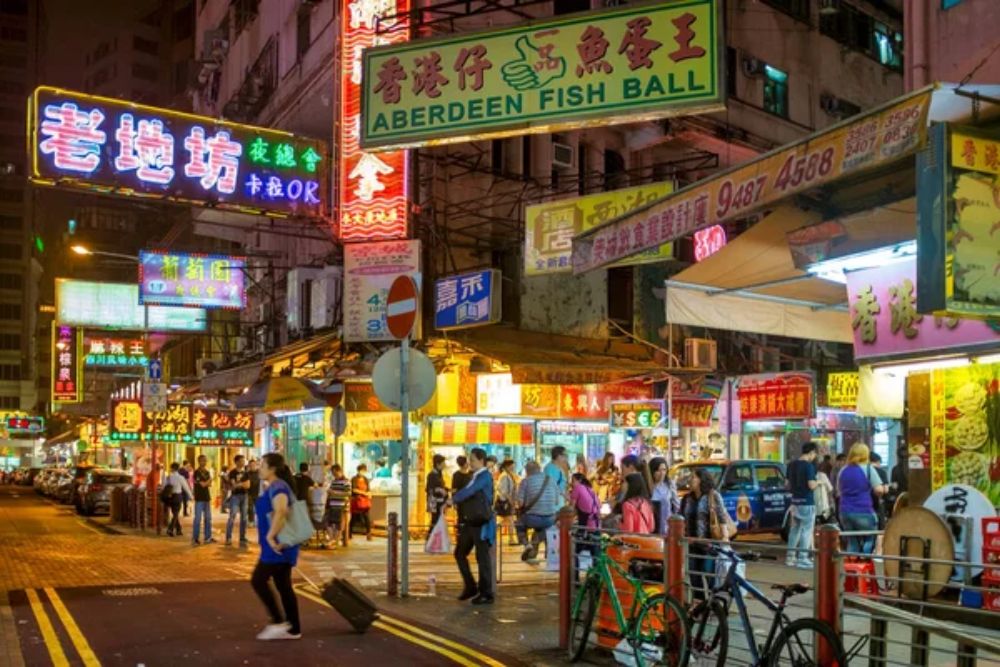
Hong Kong’s iconic market combines street food with fortune-tellers and street performers, creating an authentic Hong Kong experience that feels like stepping into a movie set. Food vendors offer Cantonese classics, such as curry fish balls, stinky tofu, egg waffles, and fresh seafood, all prepared in traditional styles.
The market maintains its local character despite Hong Kong’s rapid modernization, serving as a gathering place where traditional culture persists amid urban development.
Like Travel Pug’s content? Follow us on MSN.
Gwangjang Market
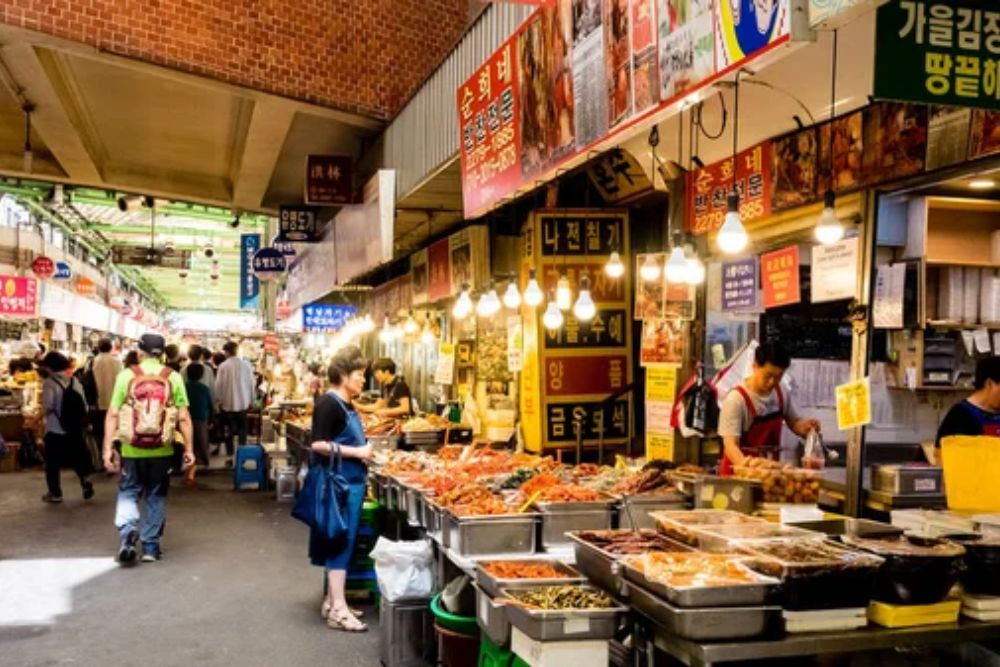
Seoul’s oldest traditional market operates day and night, but comes alive after dark with Korean comfort food that locals have enjoyed for over a century. The market specializes in bindaetteok (mung bean pancakes), mayak gimbap (mini rice rolls), and various fermented dishes that showcase Korea’s distinctive flavors.
Vendors here maintain family recipes passed down through generations, offering authentic Korean food experiences that stand in stark contrast to the country’s modern restaurant scene.
Richmond Night Market
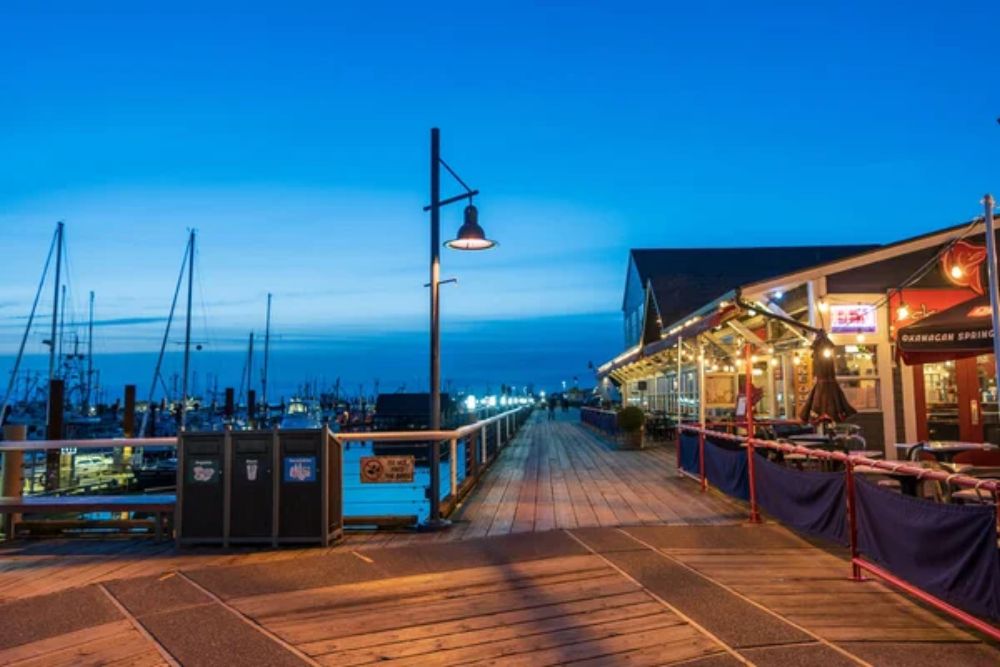
Vancouver’s seasonal market celebrates Asian-Canadian food culture with over 200 vendors offering both traditional dishes and creative fusion creations. The market features everything from Hong Kong-style egg waffles and Taiwanese popcorn chicken to Canadian-Asian fusion dishes that reflect the city’s multicultural identity.
This venue demonstrates how immigrant communities adapt traditional recipes to local tastes while maintaining authentic flavors and cooking techniques.
Night Markets of Kaohsiung
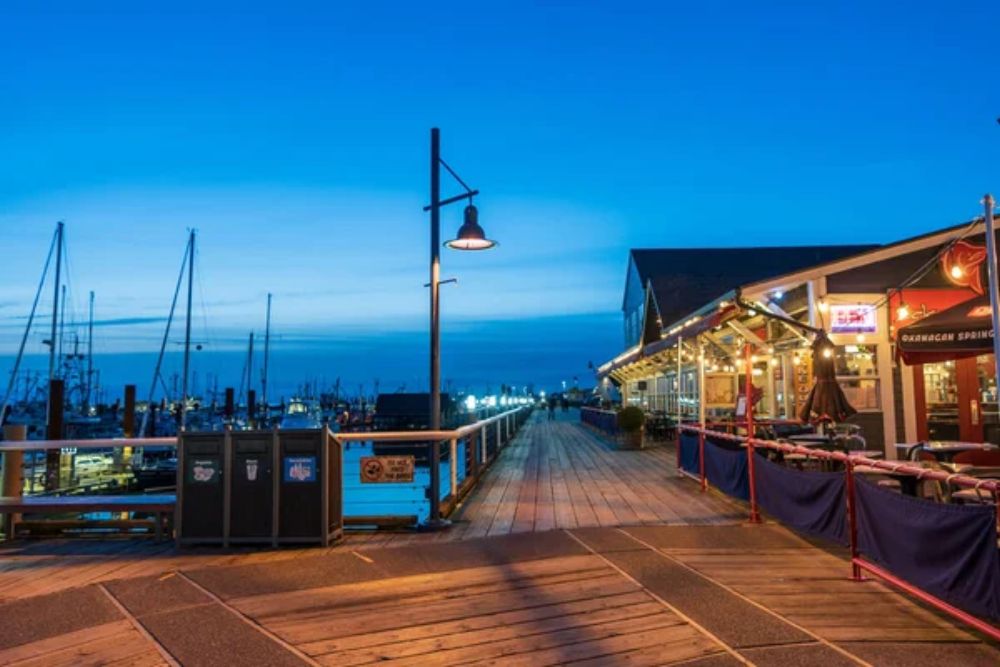
Taiwan’s southern port city is home to numerous night markets that showcase the island’s incredible diversity and innovation in street food. Markets like Liuhe and Ruifeng offer regional specialties alongside experimental dishes that push the boundaries of traditional Taiwanese cuisine.
The competitive atmosphere between vendors drives continuous innovation, resulting in creative dishes like rainbow-colored dumplings and Instagram-worthy desserts that maintain authentic flavors.
Like Travel Pug’s content? Follow us on MSN.
Bocas del Toro Night Market
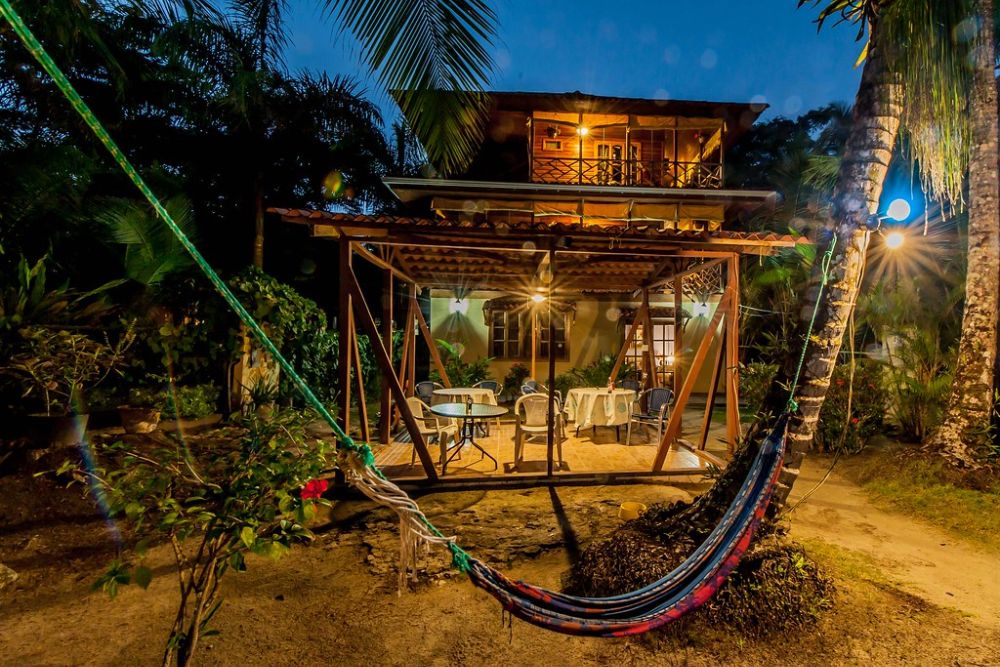
Panama’s Caribbean coast market reflects the region’s Afro-Caribbean heritage through dishes that blend indigenous, African, and Spanish influences. Vendors serve fresh seafood, plantain-based dishes, and tropical fruit preparations that capture the laid-back island atmosphere.
The market operates at a relaxed pace that encourages socializing over food, embodying the Caribbean approach to dining as a communal experience rather than just a means of sustenance.
Marché des Enfants Rouges
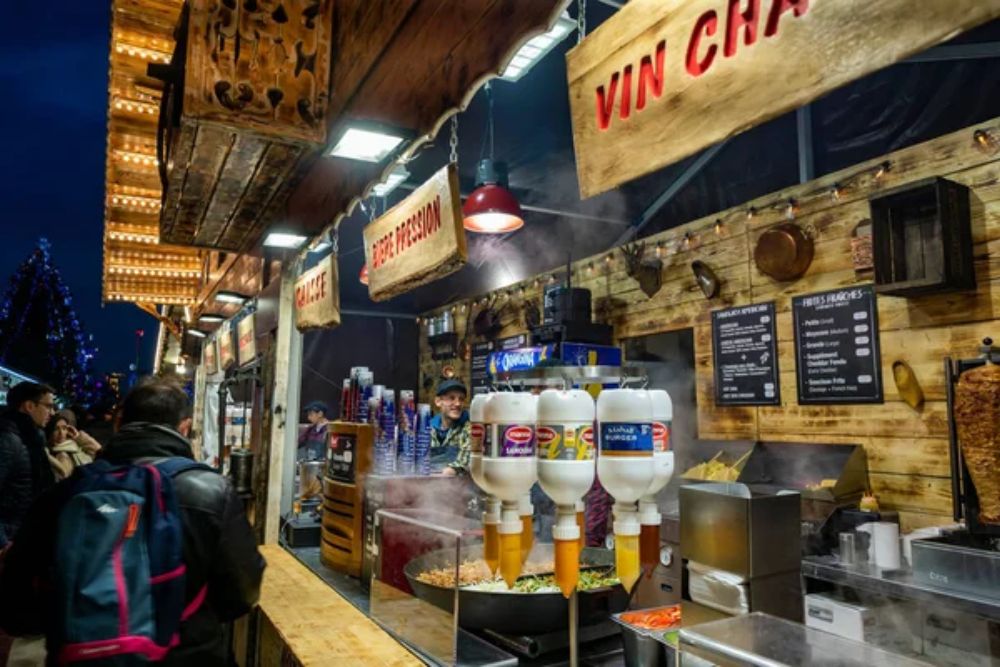
Paris’s oldest covered market transforms into an international food destination each evening, offering cuisines from Morocco, Lebanon, Italy, and beyond. The market demonstrates how traditional French market culture has evolved to embrace global flavors while maintaining its emphasis on quality ingredients and artisanal preparation.
Vendors here often represent immigrant communities who have brought their culinary traditions to France, creating a unique fusion of cultures within a historic Parisian setting.
Saphan Phut Night Market
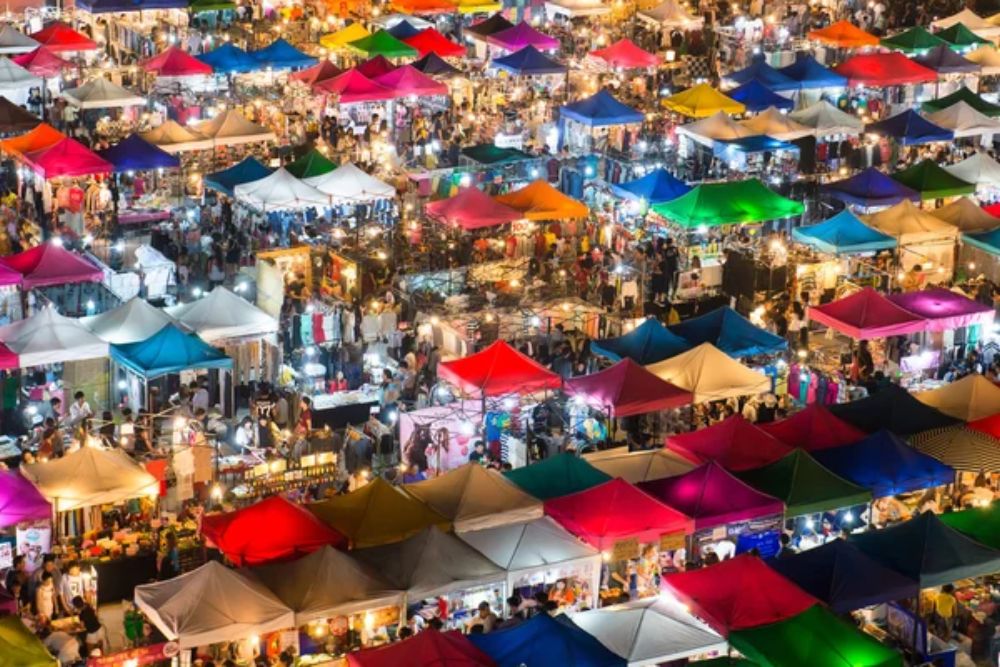
Bangkok’s wholesale district becomes a food lover’s paradise after business hours, with vendors serving workers and late-night food enthusiasts. The market offers authentic Thai dishes at local prices, away from tourist areas, providing genuine insights into how Bangkok residents actually eat.
Street food in this city reflects the city’s working-class food culture, emphasizing hearty, flavorful dishes that provide energy for long workdays and late nights.
Like Travel Pug’s content? Follow us on MSN.
Melbourne Queen Victoria Market
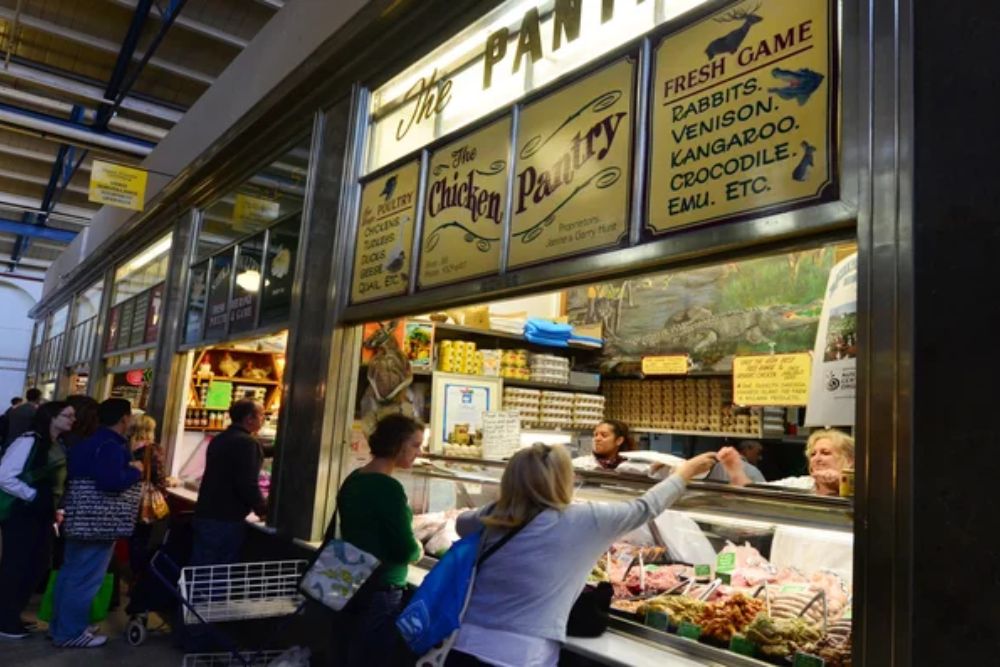
Australia’s largest open-air market extends its hours on certain nights, creating a unique Southern Hemisphere night market experience. The market combines fresh produce with prepared foods from various ethnic communities, reflecting Melbourne’s status as one of the world’s most multicultural cities.
Vendors offer a diverse range of options, from traditional Australian meat pies to authentic dishes from Greece, Italy, Vietnam, and many more countries represented in Melbourne’s multicultural population.
Keelung Miaokou Night Market
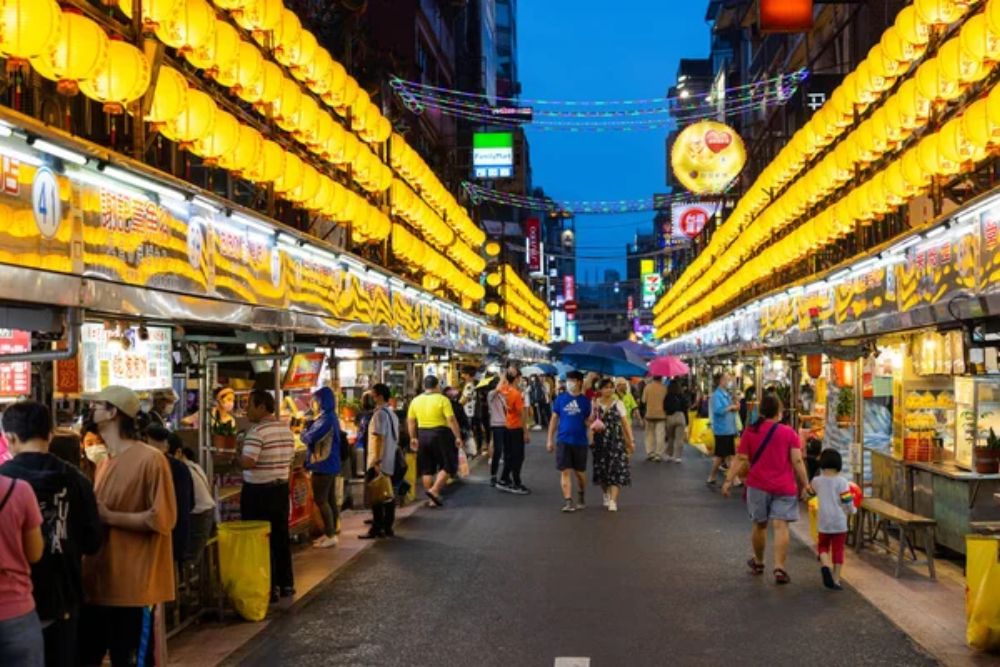
Taiwan’s coastal market specializes in fresh seafood and regional dishes that reflect the port city’s maritime culture and history. The market offers unique preparations of local catch, including dishes that can’t be found elsewhere on the island due to Keelung’s specific geographic location and cultural influences.
Vendors here have developed distinctive cooking techniques adapted to the city’s humid climate and abundant fresh seafood supply.
Galle Face Green Market
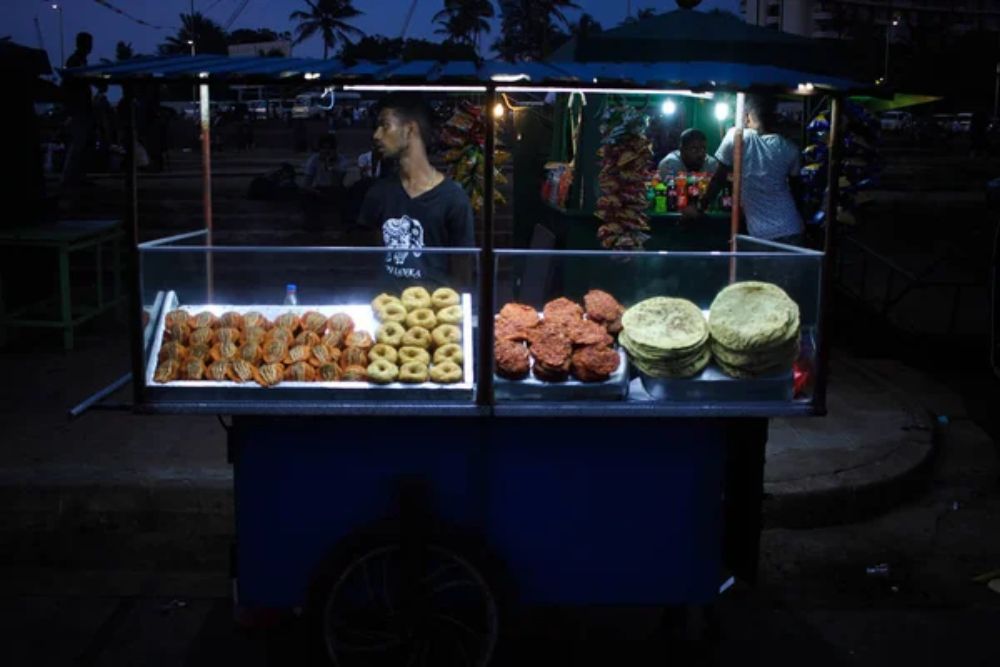
Colombo’s oceanfront market combines Sri Lankan street food with stunning sunset views over the Indian Ocean, creating one of the world’s most scenic dining experiences. Vendors offer authentic Sri Lankan dishes, such as kottu roti, hoppers, and various curry preparations, alongside fresh tropical fruits and coconut-based desserts.
The market’s location allows diners to enjoy spicy, flavorful food while taking in the ocean breezes in a uniquely beautiful setting.
Like Travel Pug’s content? Follow us on MSN.
Mindil Beach Sunset Market
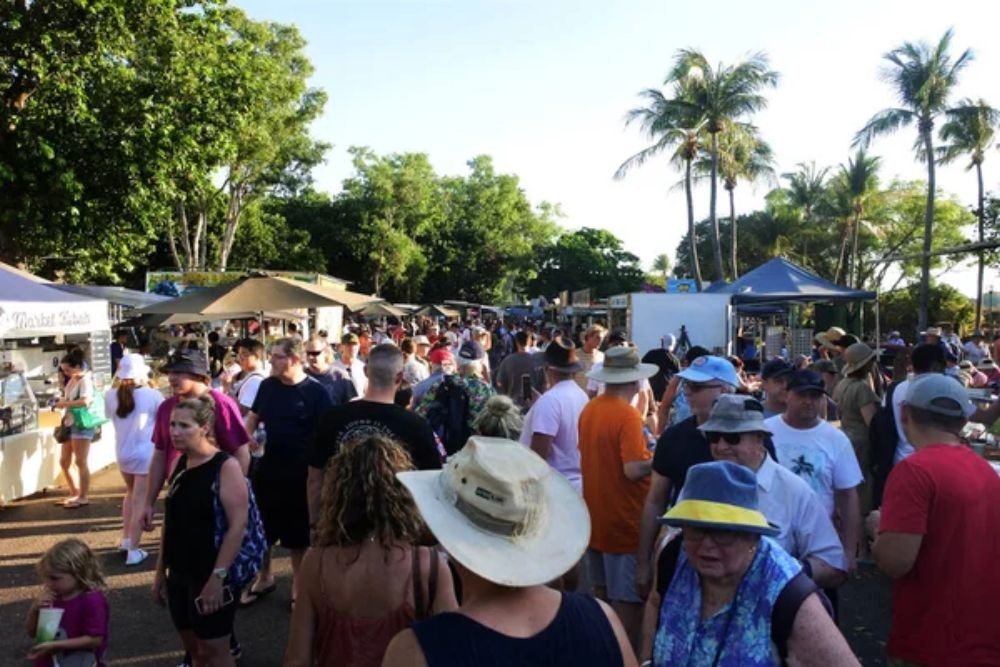
Darwin’s seasonal market operates during Australia’s dry season, offering a unique blend of international food vendors and spectacular sunset views over the Timor Sea. The market reflects Darwin’s position as Australia’s gateway to Asia, featuring authentic dishes from Thailand, Indonesia, Malaysia, and other regional cuisines alongside Australian favorites.
This venue demonstrates how geographic location influences food culture, with tropical flavors and fresh seafood dominating the offerings.
Maeklong Railway Market
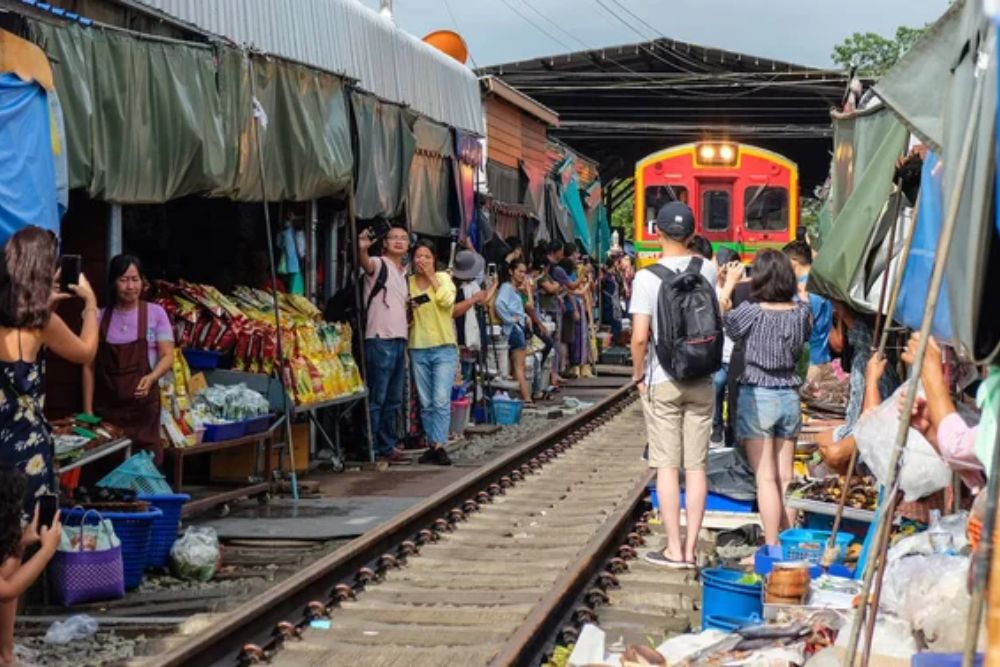
Thailand’s unique market operates directly on active railway tracks, with vendors quickly relocating their stalls whenever trains approach several times a day. The market offers typical Thai street food alongside the novelty of dining inches from passing trains, creating a thrilling food experience that can be found nowhere else.
This unusual setup has made the market internationally famous while maintaining its function as a genuine local food source for nearby communities.
Pasar Malam Gadong
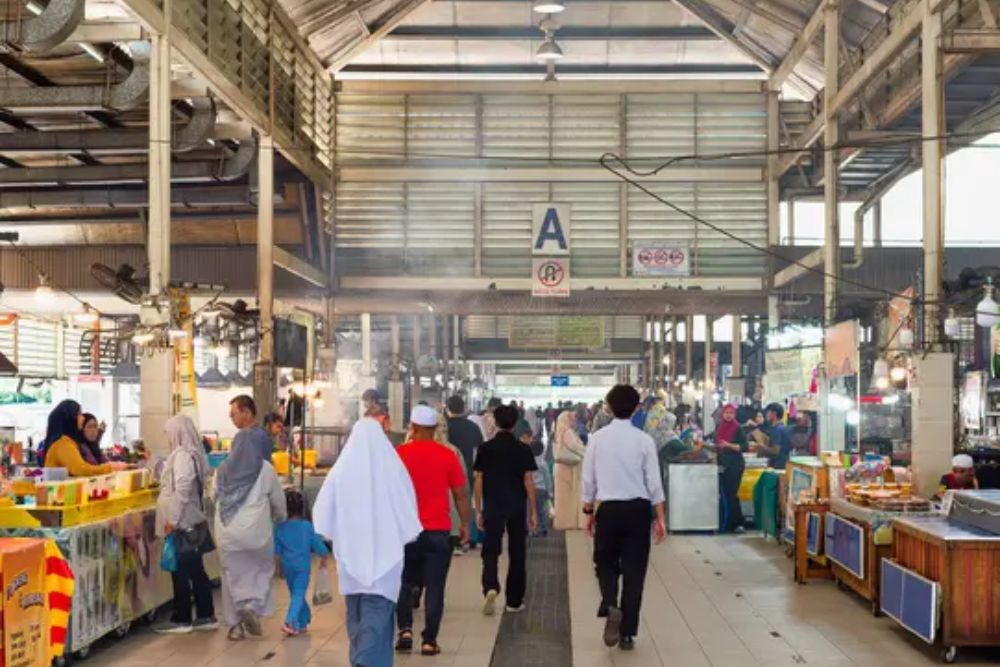
Brunei’s largest night market showcases Southeast Asian Muslim cuisine in a country where Islamic dietary laws influence all food preparation. The market offers halal versions of regional dishes alongside unique Bruneian specialties that reflect the country’s Malay heritage and oil wealth.
Vendors here demonstrate how religious dietary restrictions can inspire culinary creativity rather than limiting it, producing flavorful dishes that comply with Islamic requirements.
Like Travel Pug’s content? Follow us on MSN.
Where Flavor Meets Culture
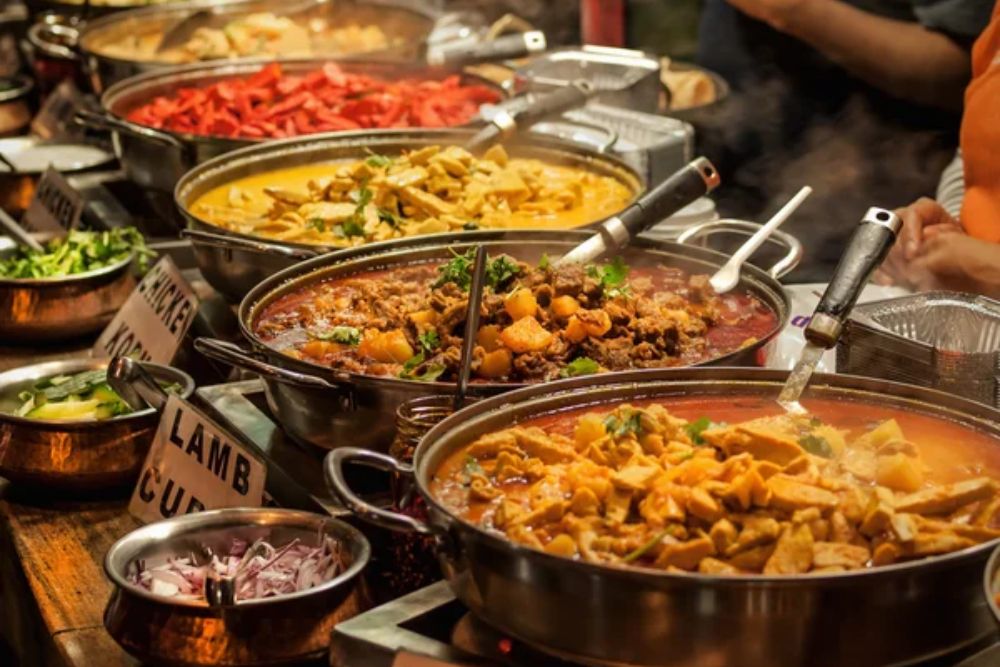
market reflects its city’s unique cultural identity, immigration patterns, and local ingredients while adapting to modern tastes and global influences.
The enduring popularity of these night markets demonstrates that authentic street food culture thrives when it maintains traditional flavors while embracing innovation and change. For food lovers, these markets offer more than just meals—they provide windows into the soul of their cities and the daily lives of the people who call them home.
More from Travel Pug

- 20 Best Beach Towns in the Carolinas
- 13 Destinations Where Tourists Regularly Regret Their Trip
- 20 Destinations That Are More Magical Without an Itinerary
- 20 Underrated Adventures That Belong on Your Travel List
- 20 Cities Where You Should Just Wing It, No Planning Required
Like Travel Pug’s content? Follow us on MSN.
